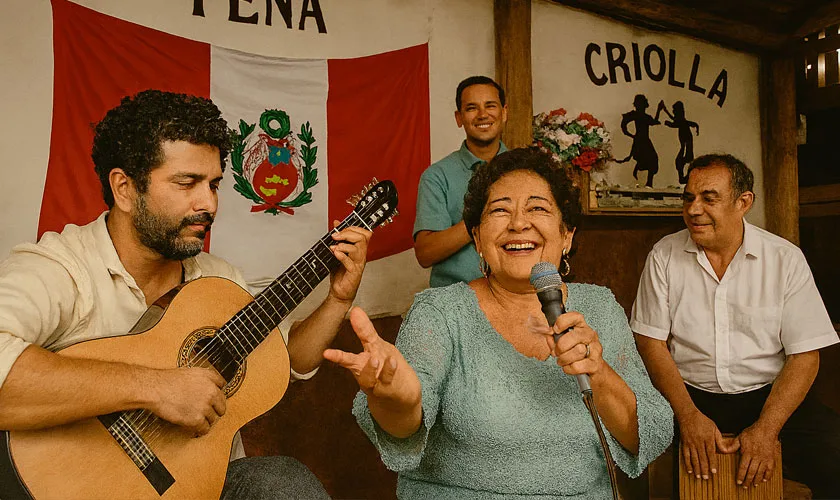Table of Contents
The Celebration That Beats to the Rhythm of the Peruvian Heart
Every October 31st, while the world prepares for Halloween, Peru dresses up to celebrate a tradition that vibrates in the soul of its people: the Día de la Canción Criolla (Creole Song Day). This date is dedicated to the music that narrates stories of love, neighborhoods, festive gatherings (jaranas), and the mixed-race identity (mestizaje) of the country. If you are in Lima or planning to visit, you will discover here why this celebration is unique.
Origin and History: Why is it Celebrated on October 31st?
Creole Song Day was instituted in 1944 by the government of Manuel Prado Ugarteche as a recognition of the popular urban music that fuses Spanish, African, and Indigenous influences. The date is no coincidence: October 31st was chosen to counteract the influence of foreign festivities like Halloween and reaffirm Peruvian cultural identity.
What is Canción Criolla (Creole Song)?
It is a musical genre that originated in the working-class neighborhoods of Lima at the beginning of the 20th century, characterized by:
- Rhythms: Peruvian waltz (vals), polka, marinera limeña, and festejo.
- Instruments: Guitar, Peruvian cajón (box drum), and voices full of sentiment.
- Themes: Love, heartbreak, city life, and nostalgia for the ancient Peru.

Emblematic Artists You Should Know
- Chabuca Granda: Author of classics like “La Flor de la Canela” (The Cinnamon Flower) and “Fina Estampa” (Fine Print).
- Arturo “Zambo” Cavero: Unmistakable voice and a symbol of música criolla.
- Óscar Avilés: Known as “La Primera Guitarra del Perú” (The First Guitar of Peru).
- Eva Ayllón: The greatest contemporary exponent, taking criollismo to the world.
Where to Celebrate Día de la Canción Criolla (Creole Song Day)?
If you visit Lima on this date, don’t miss out on:
Peñas Criollas (Creole Music Venues):
- Brisas del Titicaca (Downtown Lima): Live shows and marinera dance lessons.
- La Candelaria (Barranco): Tradition and modernity on the same stage.
- De Rompe y Raja (Miraflores): Authenticity and Peruvian flavors.
Free Activities:
- Concerts at the Bridge of Sighs (Puente de los Suspiros) in Barranco or the Exhibition Park (Parque de la Exposición).
- Gastronomic fairs featuring typical dishes like anticuchos and picarones.
Flavors That Accompany the Music
A jarana criolla (Creole party) is not complete without:
- Ceviche: The Peruvian flag dish.
- Causa Limeña: Flavors that captivate.
- Pisco Sour: The emblematic drink for toasting.

Fun Facts for Tourists
- Traditional Attire: Many Peruvians dress in white suits or marinera dresses to dance.
- Interaction: At the peñas, it’s common for the audience to sing along with the artists. Feel free to join in!
- Modern Fusion: Artists like Susana Baca or Novalima have refreshed the genre with touches of jazz and electronic music.
Phrases That Define the Creole Song
“The Peruvian waltz is not sung, it is felt.” – Anonymous.
“Criollo is one who knows how to live with grace and charm (salero).” – Popular tradition.
A Date to Live Our Essence
Día de la Canción Criolla (Creole Song Day) is much more than music: it is heritage, identity, and shared joy. If you are in Lima on October 31st, let yourself be carried away by the chords of a guitar, the beat of a cajón, and the warmth of its people. We assure you it will be an unforgettable experience!
